Your Expert Guide to the Best Time to Visit Guanajuato (2024)
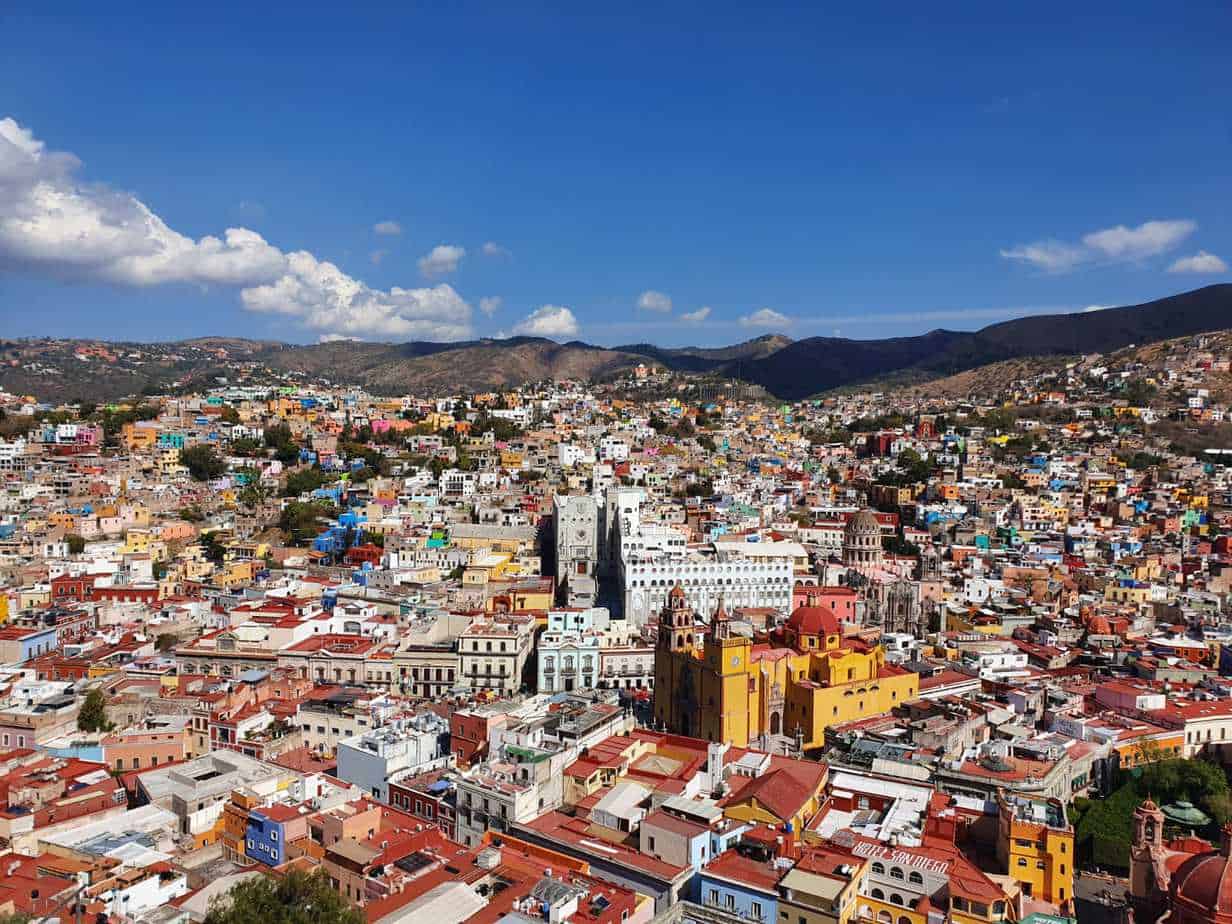
A visit to the gorgeous city of Guanajuato is an absolute must for anyone who enjoys Mexico and wants to explore a thriving modern city with oodles of history and culture. Guanajuato is pretty great to visit all year around thanks to its fabulous spring-like climate but depending on a person’s needs and desires, of course there is always a best time to visit Guanajuato.
The two questions you really need to answer before figuring out when is your best time to visit Guanajuato are as follows:
⭐️ Does the weather matter to you?
⭐️ Do you want to visit Guanajuato during its busy festival period or are you looking to visit when it’s peaceful and calm?
This article will help you figure out your best time to visit Guanajuato.
There are affiliate links in this article. If you click and make a purchase I could make a small sum at zero cost to you. Thank you!
Where is Guanajuato?
🧭 Guanajuato is the state capital of the Estado de Guanajuato. It’s located in central Mexico.
✈️ The closest airport for Guanajuato is Léon, just a forty-minute drive away from Guanajuato (check airport transfer options).
🚌 It’s 4.5 hr bus ride or drive from Mexico City.
Best Time to Visit Guanajuato: Weather
Guanajuato has a delightfully mild climate all year long thanks to its altitude and location. GTO (the city name is often abbreviated thus) is located on the Mesa Central in central Mexico. The city spreads over steep hillsides at the junction of three ravines. It is just over 2,000 meters (6,725 feet) above sea level.
You’ll see below that the city’s average temperatures barely budge all year. We see a minimum temperature of around 7℃ and an annual maximum temperature of around 30℃, really a perfect all-year-long spring climate.
🌸 March – May. Generally dry and sunny (10 – 31℃)
🔆🌦 June – August. Sunny but often afternoon rainstorms (14 – 30℃) – this is rainy season
🍂 September – November. Mostly dry and sunny (9 – 27℃)
❄️ December – February. This is the coldest period. Crisp and dry (7 – 22℃)
High season is Dry Season
Peak season for Guanajuato runs pretty much six months of the year, from October to March thanks to the almost guaranteed dry, sunny days. These six months, therefore, are more expensive to visit than the other half of the year.
July is the wettest month in Guanajuato. The rains are rarely terrible in this semi-arid climate but if you prefer to avoid both the chance of rain and peak season, consider visiting either side of high season – shoulder season as it’s known (November and February).
Personally, I think that Guanajuato is a great place to visit and it really is the most beautiful city so my preference would be to visit when it’s quiet, probably towards the end of the winter months.
Best Time to Visit Guanajuato: Festivals
Whether you want to embrace Guanajuato’s festivals or avoid them, it’s important to know when they are.
Handily, the two primary festivals fall in the month of October: Cervantino Festival and Día de los Muertos.
Top Tip: If you’re planning on visiting Guanajuato for either (or both) of these festivals you’ll need to be super organised, buying your festival tickets early and snaring accommodation before prices rise on the remaining hotels and apartments.
Cervantino Festival (El Festival Internacional Cervantino)
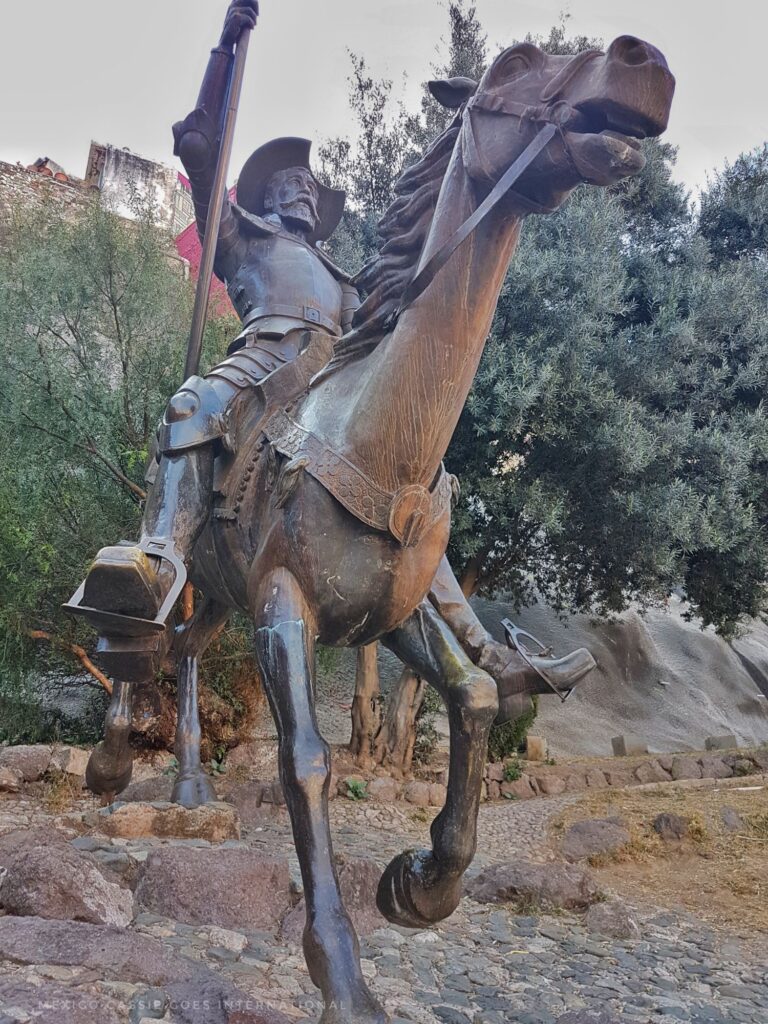
This is one of the most significant cultural events in all of Latin America and people flock to the city from around the world to be a part of it. If you’re lucky enough to be in Guanajuato for this festival you’ll see the city fill with music, theater and dance performances.
2024 will see the 52nd Cervantino Festival held in Guanajuato
When: 11 – 27 October
Festival tickets go on sale in March
⭐️ Preparations for the festival begin in August so from then on, the city feels geared up for fun and excitement.
📌 How Did Cervantes, a Spanish Writer Impact Guanajuato’s Sanitary Systems?
Until the mid-1970s parts of Guanajuato didn’t have access to running water, a sewage system or even electricity. Families would come down the mountain and into town to collect water from the public water taps and then carry it back up to their houses. Toilets were just a room at the back of the house, there wasn’t even a hole in the ground for many. People would go to the bathroom on the floor and then some lucky family member would have to sweep up the waste and carry it into the hills for disposal.
All this changed thanks to Cervantes, the author of the famous Don Quixote.
Yes. You read that right. A book written in Spain in 1605 had a direct impact on the twentieth-century sanitation system.
So basically, Guanajuato is home to an incredibly beautiful and famous university. From 1953, Enrique Rueales had his students act out short plays by Cervantes during an event he called “Entremeses de Miguel de Cervantes”. This is how the Cervantino festival came about.
Over the years, the students’ plays grew in popularity, other acts started joining in and people starting visiting the city specifically to see the performances.
And then the city officials realised that they should probably do something about the lack of sewage, running water and electricity. They also started with the whole painting of the houses in bright and bold colours as a deliberate effort to attract more visitors.
So Guanajuato, apparently the world’s most colourful city, is colourful directly due to Cervantes and a university professor (oh yeah, and the sewage system got fixed).
Día de los Muertos
Right on the tail of the Cervantino Festival comes Day of the Dead, Mexico’s most popular festival.
Dates: The official dates are 31 October – 2 November but you can be sure that there will be at least a week’s worth of celebrating in the streets in the lead up to the celebration.
📌 What Happens In Guanajuato for Día de los Muertos?
A lot of the excitement for visitors to Mexico over Día de los Muertos comes from wandering the streets and seeing ofrendas (altars) in shops, restaurants and on the streets. Do not miss the monumental altar built by the university students on the steps of the University of Guanajuato every year to commemorate academic figures from the university.
In Guanajuato you’ll also see tapetes de arena (sand paintings) – like the mandala, these represent impermanence. They are are made to honour and welcome spirits home.
Of course, don’t miss the Día de los Muertos evening parade and if you speak Spanish, join a callejoneada macabre for a nighttime tour of the city.
Other Festivals in Guanajuato
📍 Spring Break – not super important to Guanajuato but still, a great alternative to joining the hoards on the beaches.
Dates: Spring Break is in March/April
📍 Easter celebrations/Semana Santa – Easter Sunday is 31 March 2024. Semana Santa is the week leading up to Easter Sunday. During this week there may be some businesses closed and some religious celebrations visible but life pretty much carries on as normal for most people. Schools are closed so many Mexican families head to the beach.
📍Festival Internacional de Cine (the Guanajuato International Film Festival – also known as GIFF). Young Latin American film makers get to show their wares at this world renowned film festival.
Dates: July 19 – 28 2024
📍 Día de la Independencia – Hear the Grito de Dolores. There are parades and ceremonies in every city in Mexico but given Guanajuato’s links to the start of the War of Independence, this is one of the most interesting places to hear the Cry of Dolores.
The first ever cry was actually a call to arms by the priest Miguel Hidalgo y Costilla. He rang his church bell and cried out, “¡Viva Mexico!” thus triggering the Mexican War of Independence. Every year in every town this cry is re-enacted from the Palacio de Gobierno (or the Palacio Nacional in CDMX). The names of those who fell during the war are called out and the speech ends with “Viva Mexico!” called three times and the National Anthem. It’s really a very special event to witness.
Date: Hear the cry on the evening of the September 15 and see parades on September 16
⭐️ So hopefully now you’ve figured out the best time to visit Guanajuato. Basically this boils down to whether you’re up for festivals and crowds as part of your Guanajuato experience.
Where to Stay in Guanajuato
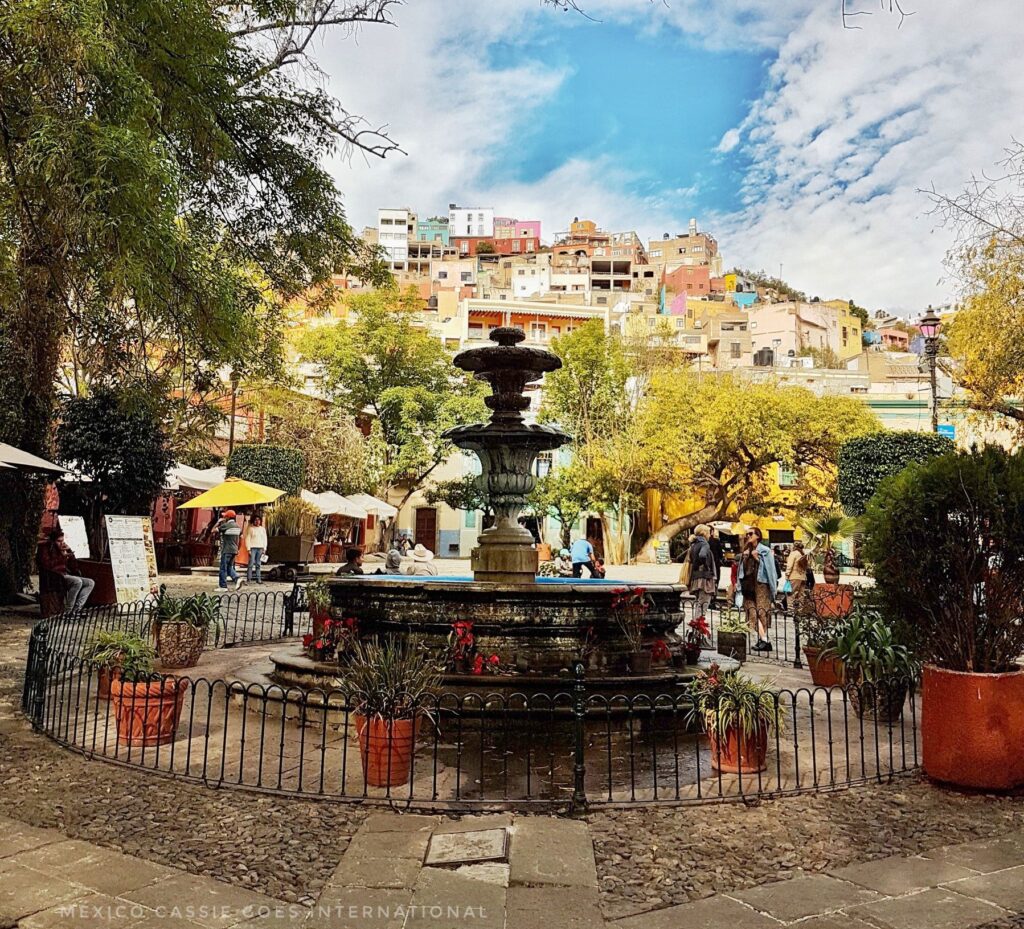
However you’re feeling about the best time to visit Guanajuato, you still need to book accommodation and if you’re going to visit during a festival, be sure to book your accommodation well in advance.
📌 Before you figure out where to stay you need to know that Guanajuato is one of the steepest places I’ve ever visited. When I visited with my gang of travel buddies, we booked an awesome house up at the top of the one of the ravines. This meant a lot of huffing and puffing our way up and down a lot of steps and hillsides at least twice a day. (Yes, there are cabs. We know.)
Anyway, point is, if you don’t enjoy steps and hill walking, book somewhere down in the historic center. If you love views and getting a good work out, go nuts and book at the top of the ravine
A Brief History of Guanajuato In 2 Parts
The Conquistadors Arrive
📌 Guanajuato is a city of acute historical importance in Mexico. Visiting without knowing this would not help you to make the most of your visit to this gorgeous city.
The modern city of Guanajuato was founded in 1559 by the conquering Spaniards. They had no interest in creating a sensible, liveable city, they just wanted access to the incredibly rich, recently discovered, mines in the region.
So basically, the Spanish built a bunch of houses on the side of the mountains, next to the river with nary a thought for future generations. And, of course, they built over any prehispanic settlements there may have been.
While the pre-Guanajuato settlement was no pre-Mérida T’ho, it certainly wasn’t an uninhabited area. The original people referred to the region as Kuanasi-Uato, ‘Place of Frogs’ because there were apparently rocks in the shape of frogs. The name got distorted by the Spanish and became Guanajuato.
The early history of the city isn’t that happy. I mean, how can it be when the city was founded specifically to steal resources and essentially meant enslaving the local population and shoving them down the mines.
⭐️ As ever, when you explore a colonial city in Mexico, gorgeous as it is, remember why it’s there and consider what came first.
Mexican War of Independence
📌 Let’s move forward a few hundred years now to the early 19th century.
The Mexican War of Independence began in 1810 with the Grito de Independencia (Cry for Independence) in the town of Dolores Hidalgo, not far from Guanajuato.
Guanajuato itself was the site of the first victory for the Mexican rebels against the Spanish, also in 1810. The then newly built Alhóndiga (granary) was converted into a fortress by 300 Spanish and loyalist troops when Miguel Hidalgo led 20,000 rebels through the streets of Guanajuato.
According to legend, a local guy, Juan José de los Reyes Martinez Amaro, popularly known as Pípila, put a stone slab on his back to protect himself from Spanish arrows and hot oil and approached the Alhóndiga and kicked the door down, allowing the rebels to enter and kill all the Spanish within.
What To See and Do in Guanajuato
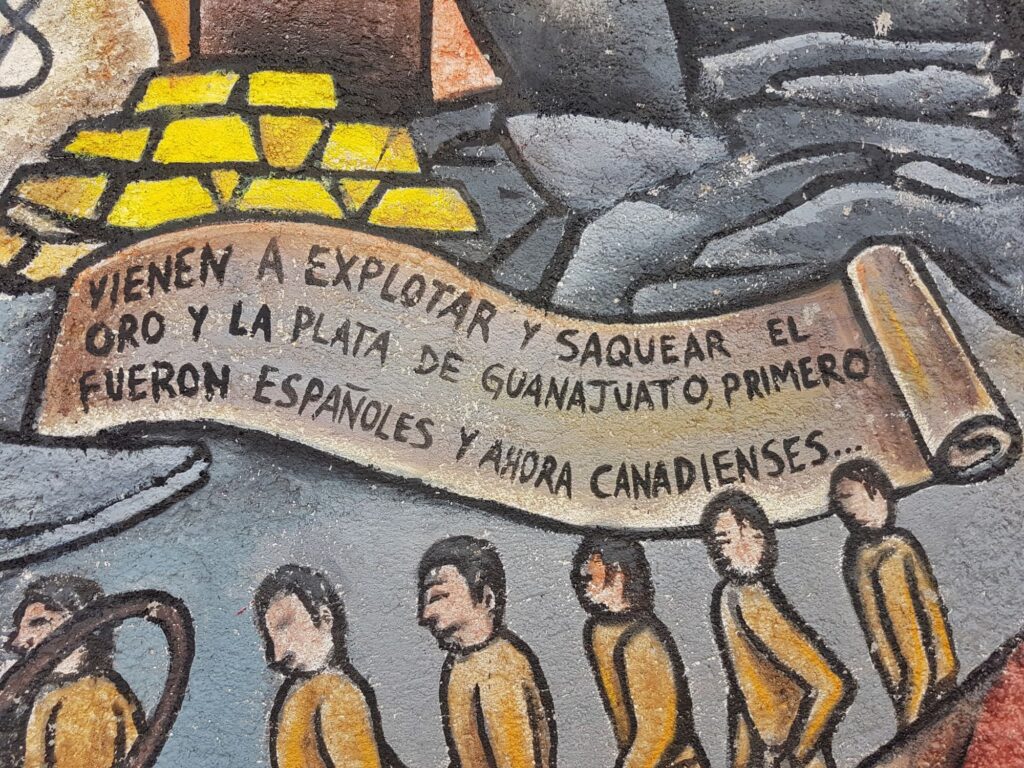
Political street art – part of a large mural. The text reads: They come to exploit and remove the gold and silver of Guanajuato. First came the Spanish and now the Canadians.
📌 Guanajuato City is actually a UNESCO World Heritage Site along with the nearby silver mines.
According to the UNESCO website, the city’s “past can be seen in its ‘subterranean streets’ and the ‘Boca del Inferno’, a mineshaft that plunges a breathtaking 600 m. The town’s fine Baroque and neoclassical buildings, resulting from the prosperity of the mines, have influenced buildings throughout central Mexico. The churches of La Compañía and La Valenciana are considered to be among the most beautiful examples of Baroque architecture in Central and South America. Guanajuato was also witness to events which changed the history of the country.”
Stroll Around Guanajuato
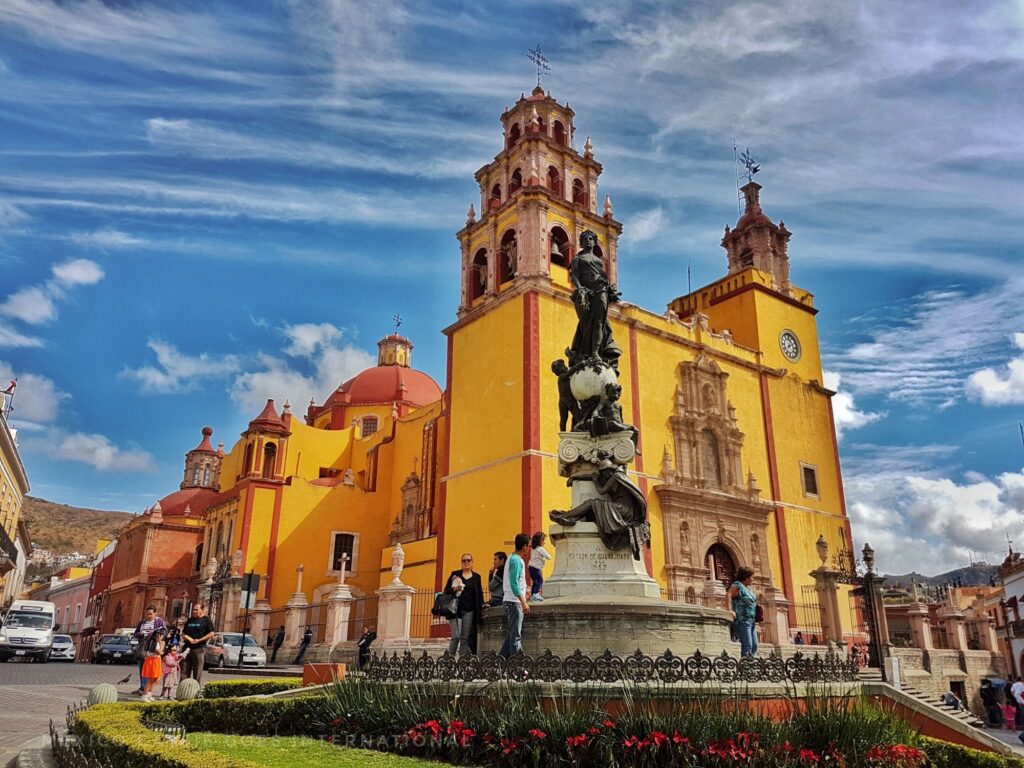
📍 Enjoy strolling through the narrow streets of this beautiful, old colonial city. There are thought to be well over 3,000 alleys!
Begin on Plaza de la Paz. If you’re interested in churches then take a moment to admire the famous 17th century church, the Basílica Colegiata de Nuestra Señora de Guanajuato. Apparently there is an 8th century statue of Mary inside this 17th century church.
Stroll down Luís Gonzales Obragón and take a left onto Del Truco, reputedly the prettiest road in all of Guanajuato. You’ll want to get yourself back onto Luís Gonzales Obragón though as this road will take you to the Jardín de la Union, the Teatro Juarez and plenty of interesting shops.
Don’t miss Calle de Sopena (fun to explore for shops and cafes).
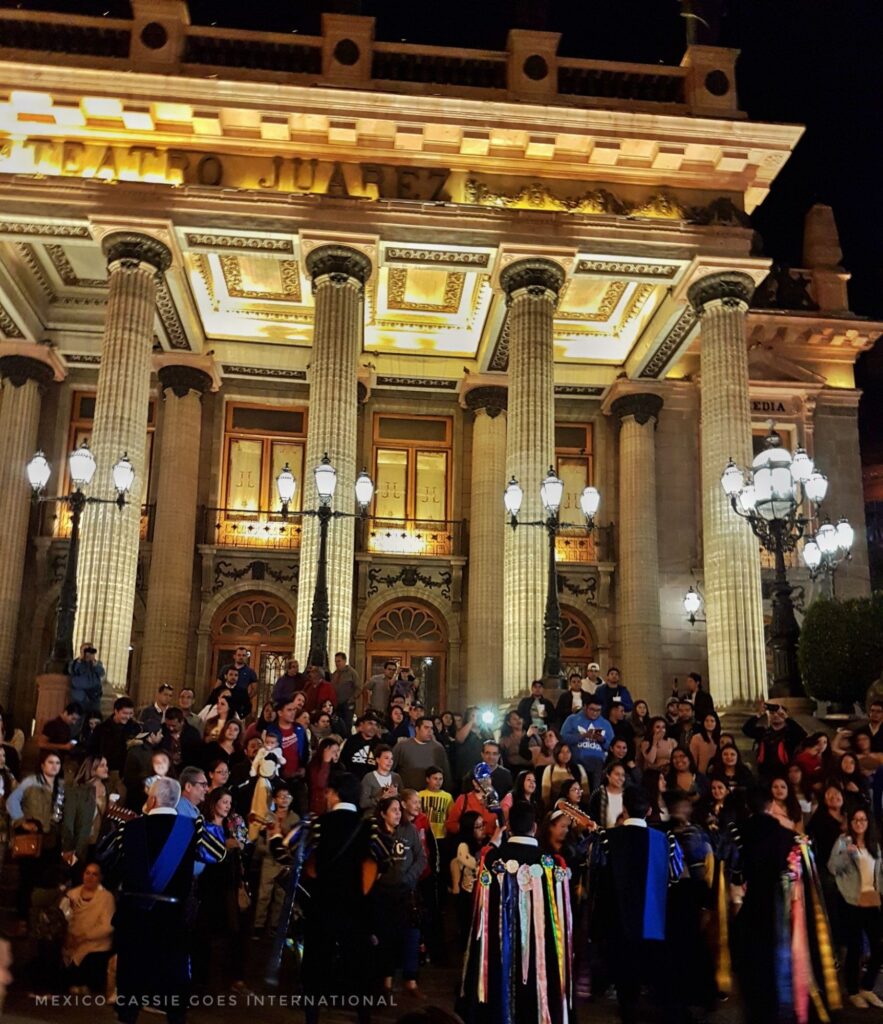
📌 What are the Famous Callejoneadas of Guanajuato?
The callejoneadas are a local tradition of musicians who act as guides and take groups through the city at night, singing traditional Mexican songs, joking and telling stories. The performers are called “estudiantinas” and they take their groups to the most famous places in the city as they perform. They are often dressed in regional clothing (photo above).
This is not only a tourist activity. In the 19th century when Guanajuato was an important mining city the university students would perform in musical groups at celebrations of the mine workers.
➡️ Book a Callejoneada tour through Guanajuato
⭐️ If you don’t want to pay to follow a callejoneada you could always hang around outside Teatro Juarez as there is always something going on here. You’ll find people singing, doing comedy shows, getting crowds together. Just sit on the steps and wait!
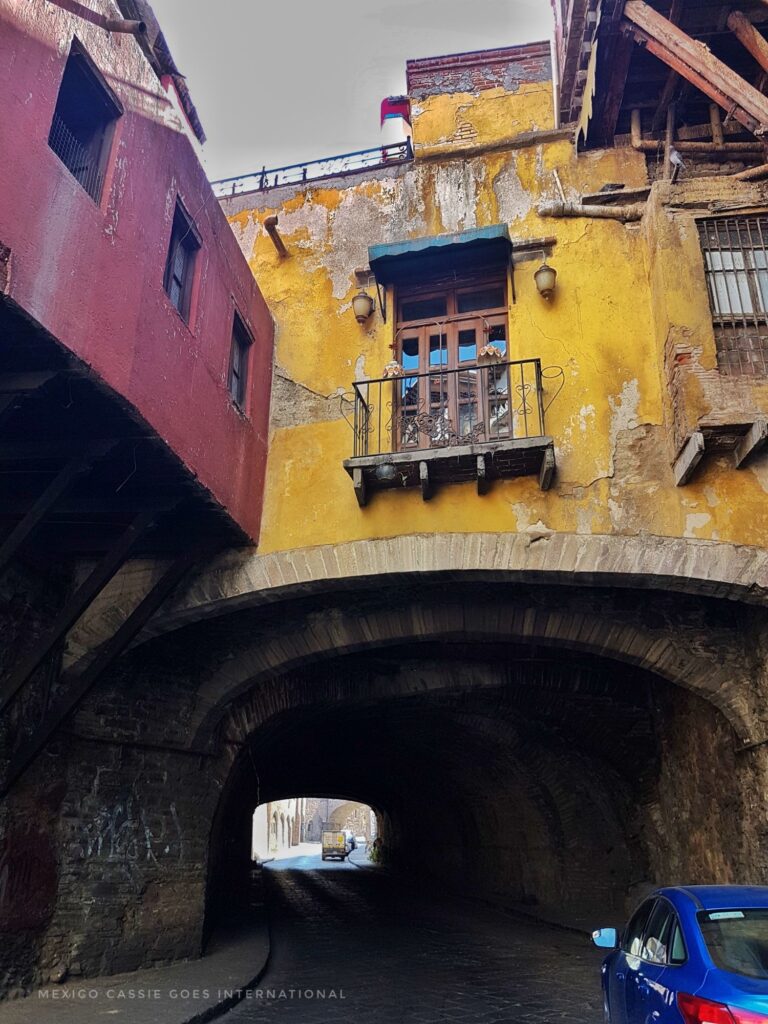
Calle Subterrenea – a nod to Guanajuato’s mining past remains in these roads that run under the city. While the tunnel-roads themselves aren’t super interesting, I absolutely love the arches and entrances to them.
Plaza Allende – if you feel like a walk, this plaza is an easy walk from the main central area and the statue of Don Quixote, in my opinion is worth seeing.
Plaza Baratillo – this is my favourite plaza in all of Guanajuato and not just for the incredible tamales we found here. The plaza is a delight, with a fountain in the middle, narrow streets heading off it and great restaurants to be found.
➡️ Check out walking tour options in Guanjuato
Note that there is, of course, a tour bus if you don’t feel like walking around Guanajuato. Pick it up on Plaza de la Paz.
Don’t Miss in Guanajuato
Mercado Hidalgo
In this clean market, you’ll find many options for eating well and cheaply as well as stalls selling souvenirs and more. Next door is Mercado de Gavira, a food market with many restaurant stalls selling traditional foods.
Callejón del Beso (Alley of the Kiss)
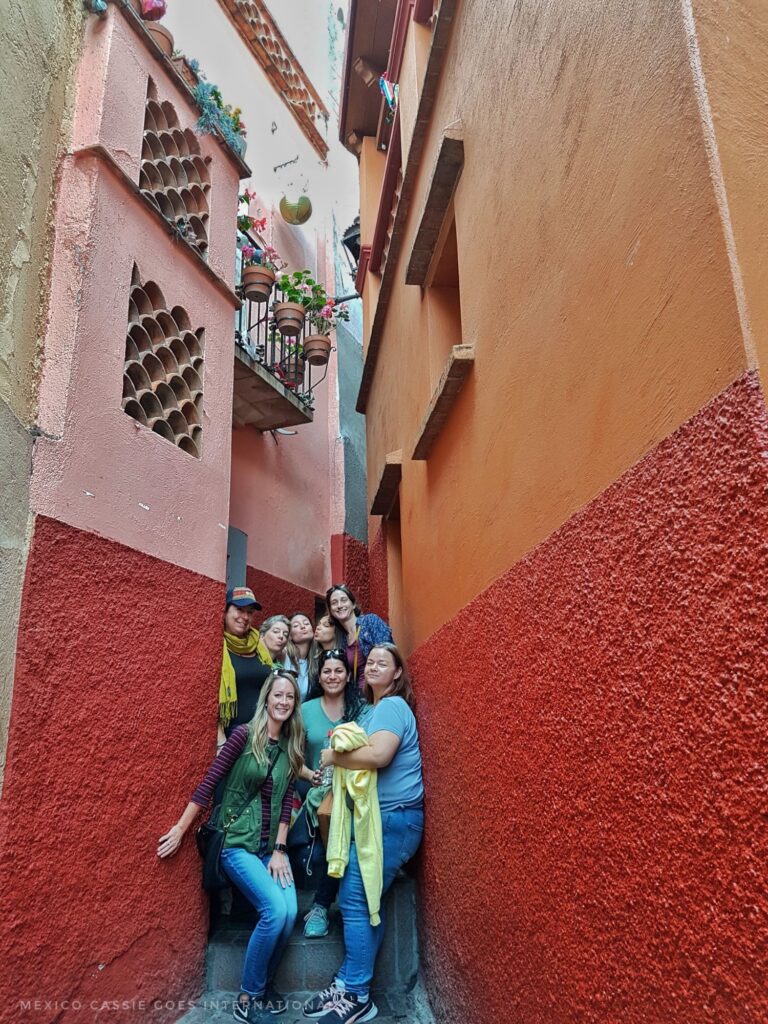
This is one of the most famous tourist points in all of Guanajuato. It is the narrowest spot between two houses in Guanajuato (168cm at the base). People like to come here to be photographed kissing on the step between the two houses.
📌 What’s So Special About the Callejón del Beso?
There’s a legend about a boy and a girl (yawn) falling in love, being banned from loving each other (‘cos that always works) and finding a way to kiss across the alleyway.
The dad locked his daughter in her room preferring to marry her off to some old and rich Spaniard rather than let her fall in love. Her love interest rented/bought the house opposite so they could kiss across the almost touching balconies
Of course, the patriarchy won out and the girl’s dad found out (double yawn) and shot them dead /stabbed her/the boy threw himself out the window.
Anyhoo, that’s the story with the Cassie take on it. So yeah, it’s a pretty spot, for sure. I absolutely am glad I saw it. I’m also glad I got to take a silly photo with my friends in the absence of a lover.
Where: Off Calle Venado
Note: Lines to take your photo here can stretch down the road during high season.
Pipila Monument (Monumento al Pípila)
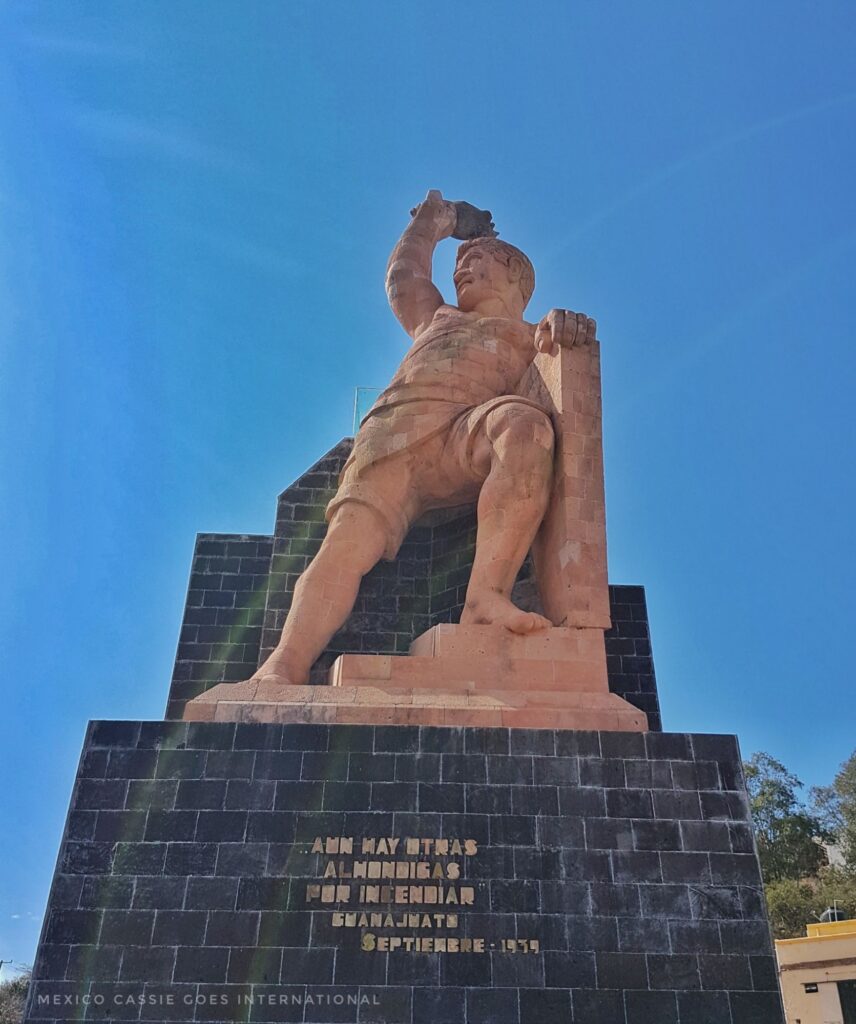
You may recall Pípila, the guy I mentioned earlier. He is a bit of a local legend and as such, there is an extremely large monument to him overlooking the city. You can either walk up many, many steps to get to the monument, or you can take the funicular.
I opted to walk up and I’m thrilled that I did as the views over the city as you get higher and higher, are just spectacular and we saw some awesome murals commemorating the city’s history as we climbed.
Even if you don’t climb and choose to take the funicular you won’t miss out on spectacular views as the view from the mirador at the base of the statue over the city of Guanajuato is phenomenal.
📌 Don’t forget to read the inscription at the base of the iconic monument: “Aún hay otras Alhóndigas por incendiar” Remember, Pípila is a hero because he torched the Alhóndiga, allowing the rebels to win the first battle of the War of Independence. The inscription translates as “there remain other Alhóndigas to burn down”. Damn right there are. Lest we forget.
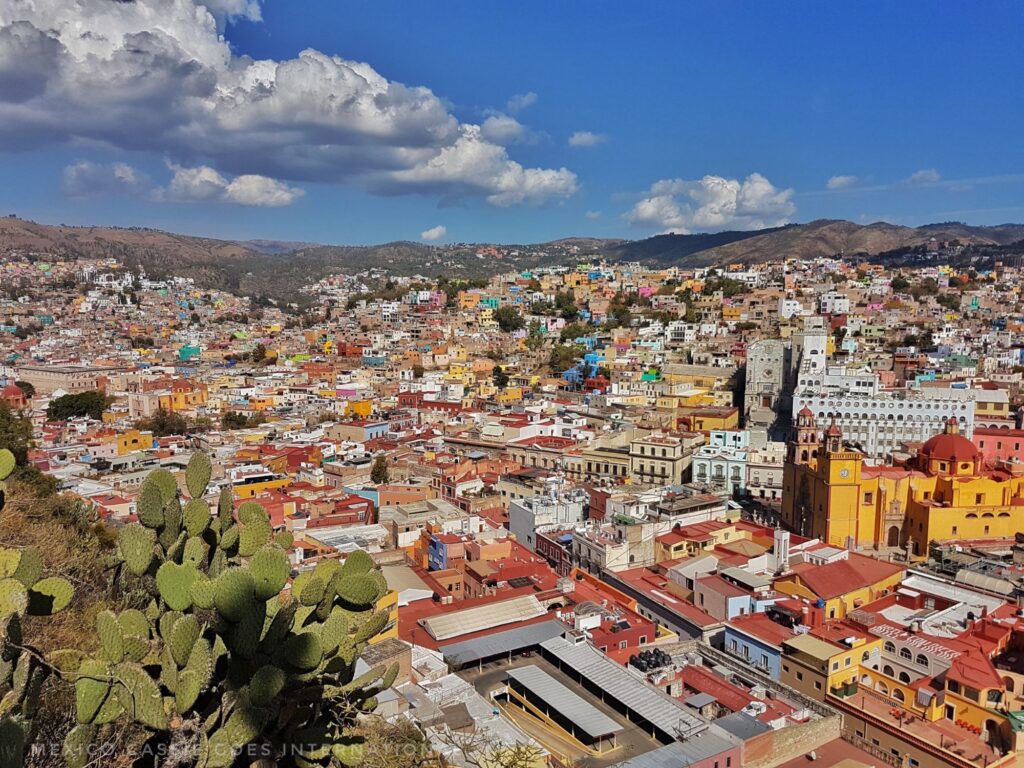
Guanajuato University
The University of Guanajuato is famously beautiful and people love to hang out on the steps and take more Guanajuato Instagram shots. Note that the presence of this university in Guanajuato does mean that there is a large student population, which in my opinion is a great thing as it means a lively atmosphere.
Museums in Guanajuato
Mummy Museum, Guanajuato (Museo de las Momias)
Guanajuato’s Mummy Museum is incredibly famous and actually was nominated as a contender for ‘best museum in Mexico’ for an article I wrote about Mexican museums
This is a museum full of preserved bodies. Surprisingly there’s very little in the way of explanation but the mummies are actually not very old. The oldest was dug up in 1865 and some even are from the 1960s. It’s super weird to see mummies wearing boxers and modern stripy socks, that’s for sure, especially for me who has a degree in Egyptology! The bodies were kept in airtight crypts and as such, mummified very fast. Once their families stopped paying for their space they were disinterred and discovered to have mummified.
I will say that an effort has been made to not just have a weird and macabre room full of bodies. The display is sensitively curated, visitors are reminded not to take the experience lightly and there are interesting quotes around the museum that are designed to make people think.
Open: Mon – Thurs 9 am – 6 pm and Fri- Sun 9 am – 6.30 pm
Museo de la Alhóndiga de Granaditas
This museum was originally a granary. A year after its completion in 1809, this incredible building became a landmark of the War of Independence. If you look up when walking around the building, you’ll see the names of the leaders of the revolution high up on top. I learned that the names are there to commemorate those who were killed and executed (yes, both). Their heads were hung from the building as a warning to others.
Inside is a fascinating mix of history and murals.
Open: Tues – Sat 10 am – 5.30 pm and Sun 10 am – 2-30 pm
Museo Palacio de los Poderes
This small museum was once the seat of political power for the state of Guanajuato.
Open: Thurs – Sat 9 am – 5 pm and Sun 9.30 am – 4 pm
Teatro Juárez
Teatro Juárez is apparently the second most beautiful building in Mexico after the Bellas Artes in CDMX.
This 19th-century building is truly magnificent. It was built by Antonio Rivas Mercado and was completed in 1897. It was inaugurated by Porfirio Dias in 1903. From the columned facade to the stained glass window bar to the intricate red and gold theatre, everything will have you exclaiming in wonder.
Open: Tues – Sun 10 am – 1.45 pm and 5 pm – 7.45 pm
Museo Casa Diego Rivera
I was so very excited to learn that Diego Rivera was born in Guanajuato. I was a bit surprised to see so little of his work actually in the city. This is apparently because he was considered a persona non grata for many years due to his communist sympathies.
The ground floor is a recreation of the house as it would have been when he was a small child. Disappointingly there is no information given at all for this section of the museum.The rest of the museum is a gallery of Rivera’s works and some sketches of larger works that are in CDMX.
Well worth a poke around if you’re at all interested in Diego Rivera.
Open: Tues – Sun 10 am – 7 pm
Museo Iconográfico del Quijote
This museum is essentially two floors of art inspired by Don Quixote.
Open: Tues – Sun 9.30 am – 7 pm
Museo de Sitio Ex Convento Dieguino
This is just a room or two below the Iglesia de San Diego San Diego. I didn’t go in but I did search it out as I had read somewhere that it was possible to look down through the glass roof and check out the remaining frescoes that way. So that’s what I did. Saved me a bit of time!
Eating in Guanajuato
Street-Food Tour
A walking tour is always a good idea in any city and a street-food tour is an even better option. You get to eat your way around the place while learning something about the history, customs and cuisine.
📌 Focus on Street Food Tour
We had an absolutely great time exploring with John from Mexico Street Food Tours (full disclosure: my ticket was free but all my friends paid full price). We were shown all around the city, which made it super easy to then explore on our own later on. The tour is brilliantly designed to take in all sorts of deliciousness interspersed with history, culture and walking.
We began with three breakfasts, poor us. We visited a traditional bakery, a gordita stand and a fresh juice stand. Then we walked around and harassed poor our guide with ten gazillion questions.
After a good walk, we wound up eating the best tamales I’ve ever had in my life. It was a corn wrapped tamale with chard, cheese, sweetcorn and something very spicy. I doubt I’d ever have tried this particular tamal had I not been handed one and told to eat.
After eating tacos in the market we had delicious local ice cream in town.
Guanajuato Restaurants
Guanajuato has no shortage of excellent restaurants. We already discussed the market possibilities above so let’s look now at a couple of excellent restaurant options. Restaurants come and go, these are the few I loved that are still there.
Casa Valadez
With seriously high ratings on Google, this place is as good as it claims to be but because it’s so centrally located, be warned that there may be lines out the door for a table. We went for brunch and everyone was very happy with their meal.
Casa del Rector
Reservations here are an absolute must. Head here for stunning sunset views over the city from the rooftop bar. We, a group of nine women, showed up without a reservation and were extremely lucky to be able to blag our way upstairs. The views are great here, the bar is absolutely beautiful and the drinks were very nice. Highly recommended.
Cafe Tal
If you adore great quality coffee then Cafe Tal has to be on your list of places to visit. I think, with no hyperbole, that the $8 peso cup of black coffee I bought here might be the best coffee I’ve ever had in my life. It was creamy and rich and just perfect. I’m still thinking about and wishing I’d had more.
Santo Cafe
If you’ve done any reading about Guanajuato at all or done any photo searching then you’ve probably seen photos of the cafe on the bridge across the road. That’s Santo Cafe. Be sure to reserve if you want to sit on the terrace overlooking the street as there are very few tables.
Street Snack
If you see street sellers with flat trolleys covered in small green beans, they’re fresh chickpeas and I HIGHLY recommend getting a bag.
Day Trips from Guanajuato
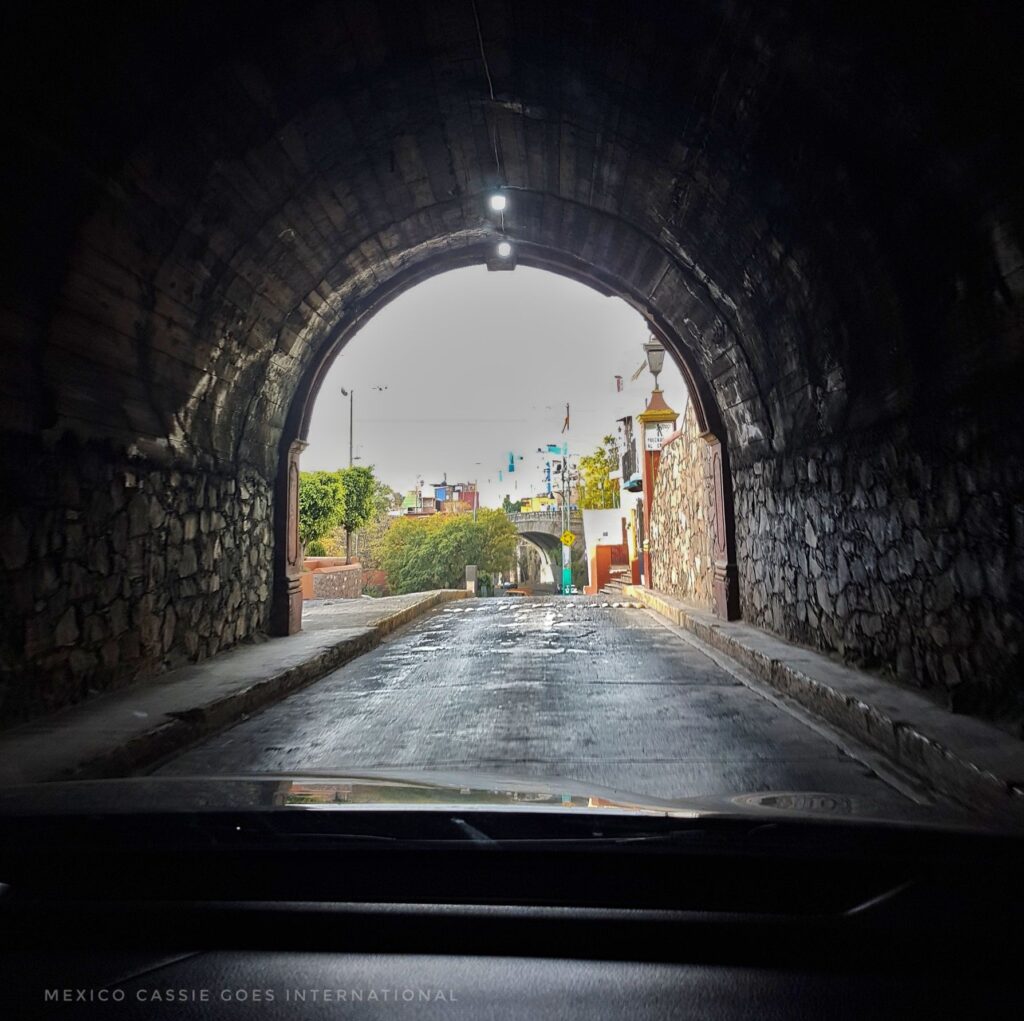
🚗 Renting a car to enable you to take cool day trips does sound like a great plan.
San Miguel de Allende
One of Mexico’s most popular cities to visit is just a short drive from Guanajuato (1hr30 in a car). In San Miguel de Allende, explore the beautiful historic center, marvel at the cathedral and if you have time explore the Charco de Ingenio (the Botanical Gardens), my favourite thing to do in San Miguel.
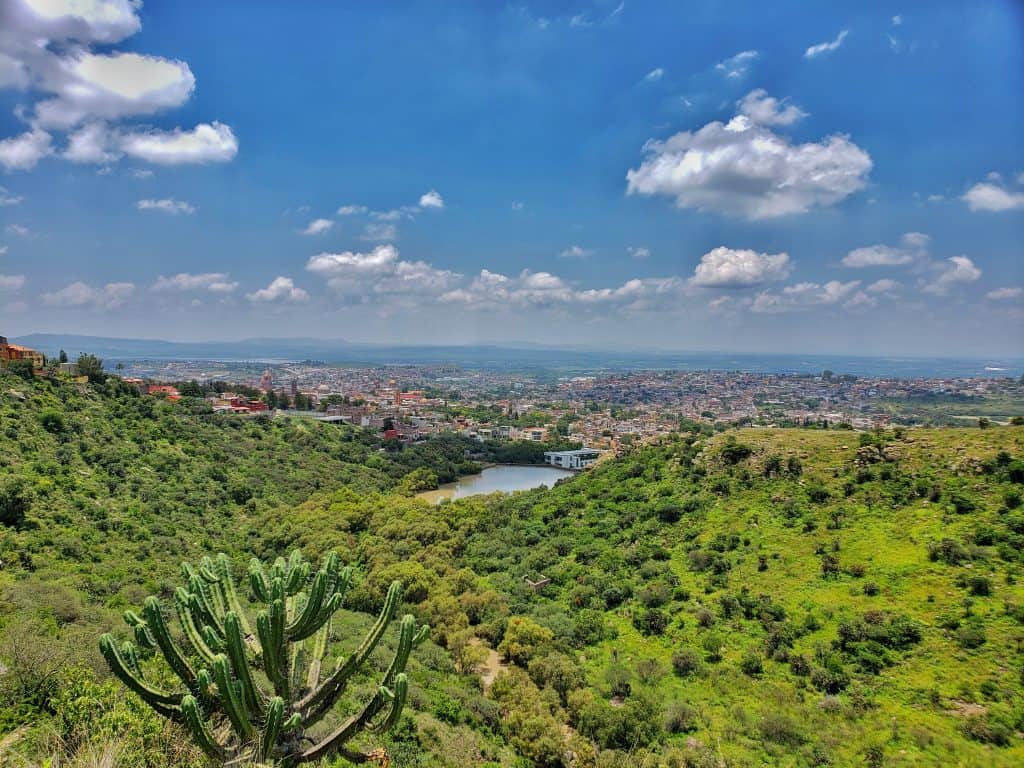
➡️ Consider this excellent day tour to San Miguel de Allende and Dolores de Hidalgo
Dolores de Hidalgo
Dolores de Hidalgo, Cuna de la Independencia is one of my favourite small towns in all of Mexico. Just 1 hour by car from Guanajuato, who wouldn’t want to visit the “Cradle of Mexican Independence”?
There is a lively historic center to explore here as well as the city’s other claim to fame: weird ice creams.
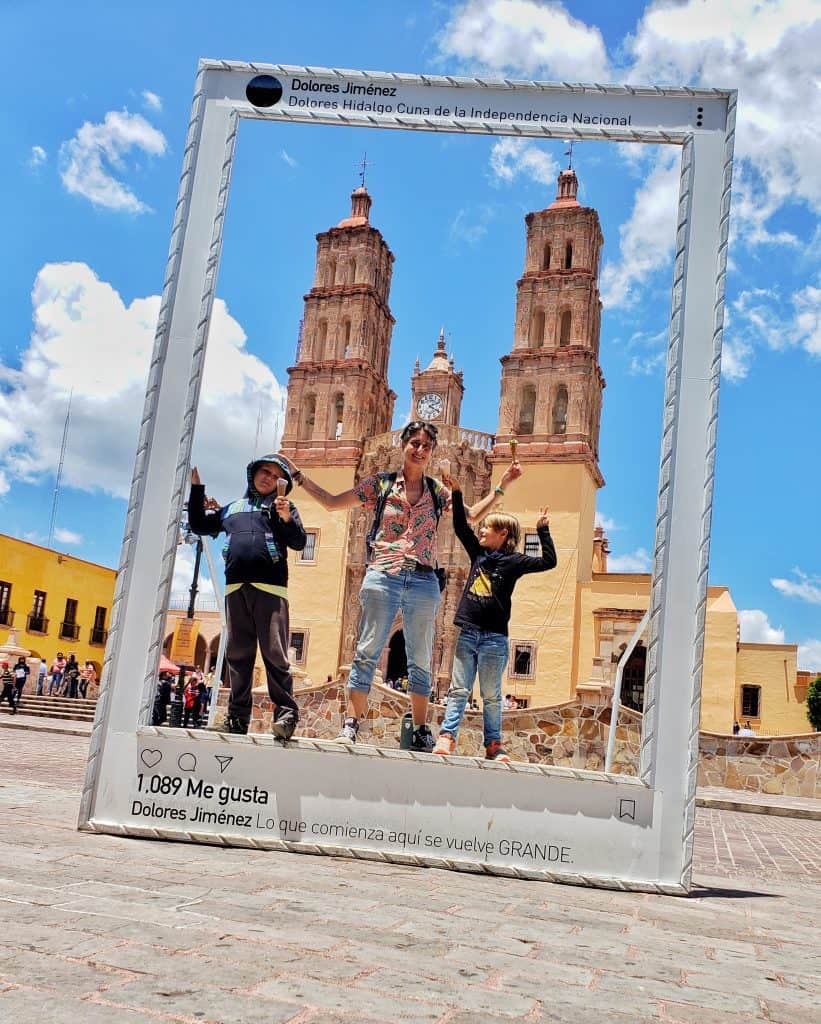
Mineral de Pozos
A two hour drive to the incredible town of Mineral de Pozos where you can visit old mines that will blow you away. Don’t miss this.
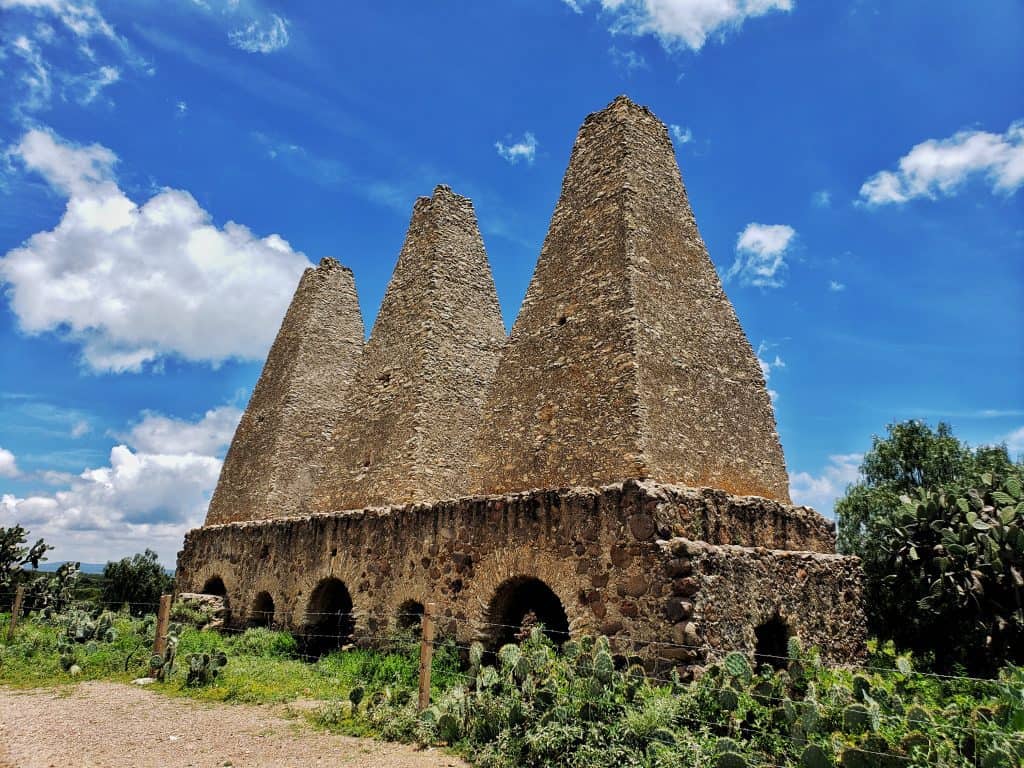
Guanajuato Presa de la Olla
Some 20 minutes away from town is the Presa de la Olla, the city dam. It was constructed in the 18th century after people got really fed up with constant flooding in Guanajuato. Today, people like to visit the dam and its surrounding parks. The dam was created and the river that flowed through Guanajuato was diverted into pipes running under the city and out the other side.
Guanajuato Mines
As I mentioned above, Guanajuato is the city it is because of its mines. Silver was discovered in the area in 1548 and it drew the invading Spaniards in pdq.
It is possible to visit the mines around the city. I believe that Bocamina de San Ramón and Bocamina de San Cayetano are both open to visitors and can be reached by a bus from the corner of Alhóndiga and Calle 28 de Septiembre.
Horse Riding Through Guanajuato’s Mountains
Ride gentle horses through the mountains near the town of Cubilete. Enjoy a traditional meal eaten outside and have your bilingual cowboy guides perform their traditional charro music as you ride.
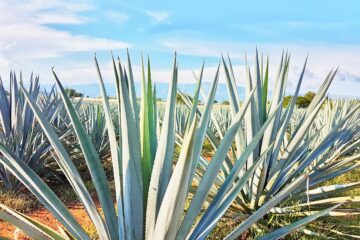
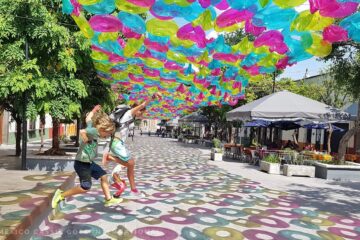
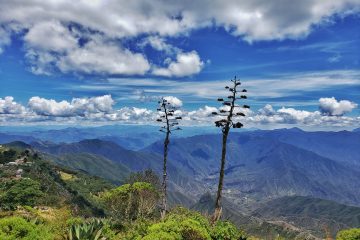
8 Comments
Lisa · 07/02/2020 at 9:39 pm
Wow such an amazing city. I love the small streets with stairs and street art. And totally agree the mummy museum looks fascinating but weird!
Viktoria · 10/02/2020 at 12:13 am
Sign me up for that food tour! Honestly, Mexico is such a great place to travel. I’ve been there more than ten times myself and I absolutely loveeeee it! Thanks for putting Guanajuato on my map!
Cassie · 10/02/2020 at 8:09 am
Definitely recommend it.
Cassie · 02/03/2020 at 8:21 am
Hope you get there soonest. It’s so wonderful.
John · 08/10/2020 at 11:23 pm
Amazing article, Cassie! My brother is going to join us in a few weeks there and I will forward this to him for sure. I’d like to add there are a few great Facebook Groups serving the Guanajuato visitor / expat community. The first is geared for those visiting or living in Guanajuato, the other group is a constantly updated list of activities and events in Guanajuato – art, music, dance, food… everything.
expat community: https://www.facebook.com/groups/gtomx/
events and activities: https://www.facebook.com/groups/1587748181247376/
John · 08/10/2020 at 11:27 pm
Great article, Cassie! My brother is joining us down there in a bit and I’ll forward this to him for sure. I’d like to add there are a few great Facebook Groups serving the Guanajuato expat community. The first is geared for those visiting or living in Guanajuato, the other group is a constantly updated list of activities and events in Guanajuato – art, music, dance, food… everything.
expat community: https://www.facebook.com/groups/gtomx/
events and activities: https://www.facebook.com/groups/1587748181247376/
Cassie · 10/10/2020 at 9:38 am
Thanks for commenting and sharing the group info. Hope you have a great time with your brother in town.
Will · 08/06/2021 at 4:54 pm
Thorough article, Ms Cassie. We were there for the month of Feb 3 years ago and did a bunch of these things. Additionally, we took buses to surrounding towns of interest 1-2 hours away and came home the same day. Fair Spanish is not necessary UNLESS YOU REALLY NEED SOMETHING. Fortunately, we never did and got by on my very minimal Spanish, but there is not a lot of English like there probably is in Baja. Dunno, never been there,.